december 2022 newsletter
yoi o-toshi wo o-mukae kudasai!

The phrase above is used towards the end of the year to wish a “good approach to the new year”, while once entered in 2023, “shin-nen akemashite omedetou gozaimasu” is used, which means: “the new year started to shine, congratulations”
In any case, everything that has a start will also have an end.
But the end is also the launching pad for a new start!
And we wish that 2023, the year of the rabbit will make you jump into wonderful new stories, new experiences, and maybe also in a new ofuro!
(You can scroll towards the end of this email to see my rabbit-themed proposal for the “haiku-yu” model with ceramic plates made by Nanzan Itoh)
White rabbits also remind me of Alice in Wonderland and of the 1969 song “White rabbit” by Jefferson Airplane.
Are you going to chase white rabbits in 2023? I think it is worth it. If we look at whats happening in the world, with the “White Knight talking backward” and “the Red Queen being off with her head” we should definitely remember what the Dormouse said.
He says “take a bath?”, right? (lol !)
or was it “feed your head” ?
Well, I think it does not matter much because in any case taking a bath is the perfect catalyst for meditating, slowing down, connecting with our inner being and of course feeding our head.
Focusing inside is the best antidote to intoxication from negative news that grow into negative feelings to originate the downward spirals that cause wars, crisis, and the lowering of our consciences.
But with the new year, we have a perfect excuse to turn the page and feed our life with positivity. And as much as it may sound egoistic and out of context, I think that positivity starts with self-love or as Japanese say “JI-AI”.
When we feel positive ad energetic, we can protect ourselves from negative emotions and have enough momentum to influence positively and lift up those around us.
Oops, I did not plan to make a sermon about positive thinking…! m(_ _)m
In any case, I think that sometimes we are taking life too seriously, and personally, my new year proposition is to follow white rabbits in 2023.
Are you with us? Let`s enjoy the chase!
New Year = new “haiku-yu” designs!
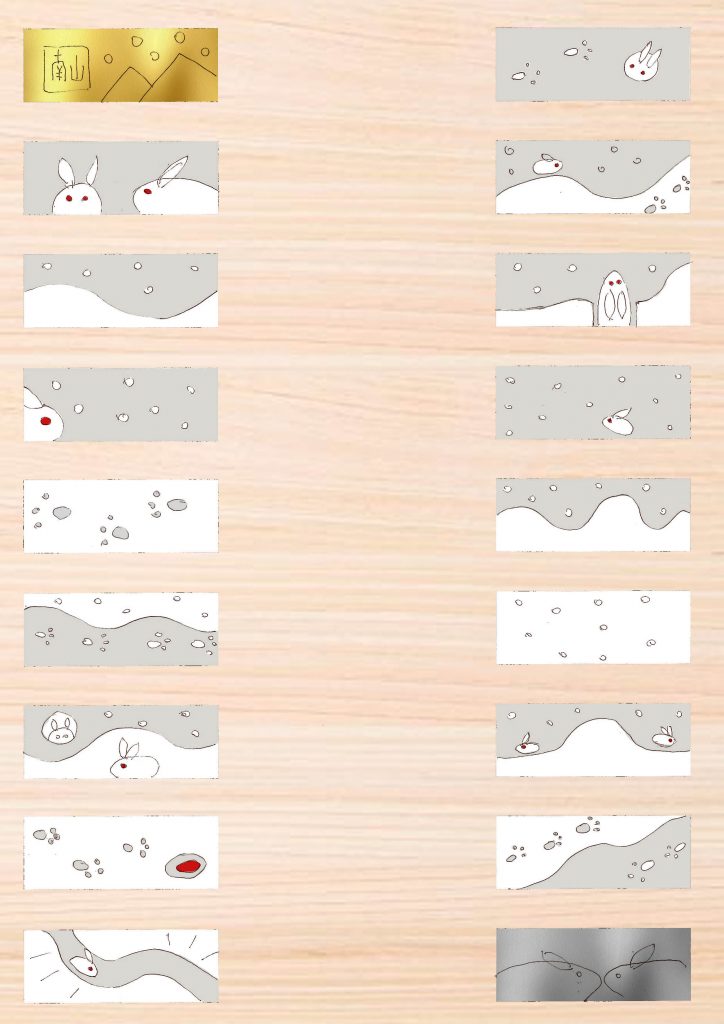
OO YUKI
大雪となる 兎の赤い 眼玉である
Ooyuki to naru
usagi no akai
medama de aru
by Hōsai Ozaki
In the heavy snow the red of the eye of the snow-rabbit becomes evident.
Very simple image yet very powerful, suggesting the bright contrast between white and red – that are also the colors used in the Japanese flag.
The rhymed ending (naru – aru) is also a notable feature of this haiku that combines audio-visual suggestions.
In this interpretation, from far, the tiles appear mostly white creating a refined yet witty coordination with the wood surface of the ofuro.
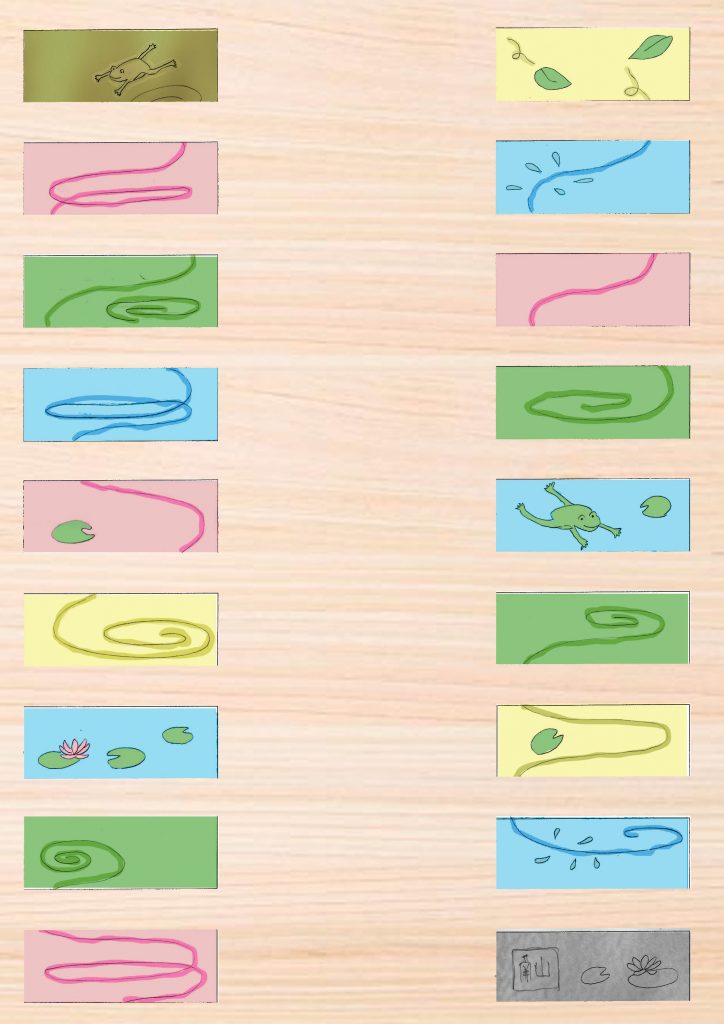
FURU IKE
Furu ike ya
kawazu tobikomu
mizu no oto
by Matsuo Basho
One of the most well-known haiku.
It depicts the multisensorial experience of a frog jumping into the old pond.
The splash of the frog jumping in the water are symbolized by droplets of water and rings on the water surface which are also a symbol of the sound of water: sudden yet mellow.
This set uses predominantly monochrome tiles; the relief is accented by a darker tone of the same base color.
As in other series, one tile representing the main theme is finished with gold color and one containing the signature of Nanzan, is enameled in chrome.
But what is haiku-yu? In the autumn newsletter, I introduced our collaboration project with the ceramist Nanzan Itoh
(see here) -> https://bartokdesign.com/0-blog_news/september-2022-newsletter.php
We will exhibit one “haiku-yu” ofuro in Honolulu on February 21st and 22nd.
Meanwhile we are also receiving order for personalized and dedicated haiku themed ofuros!
Here below are photos of the the first pop color- series that was completed, dedicated to a tea lover:
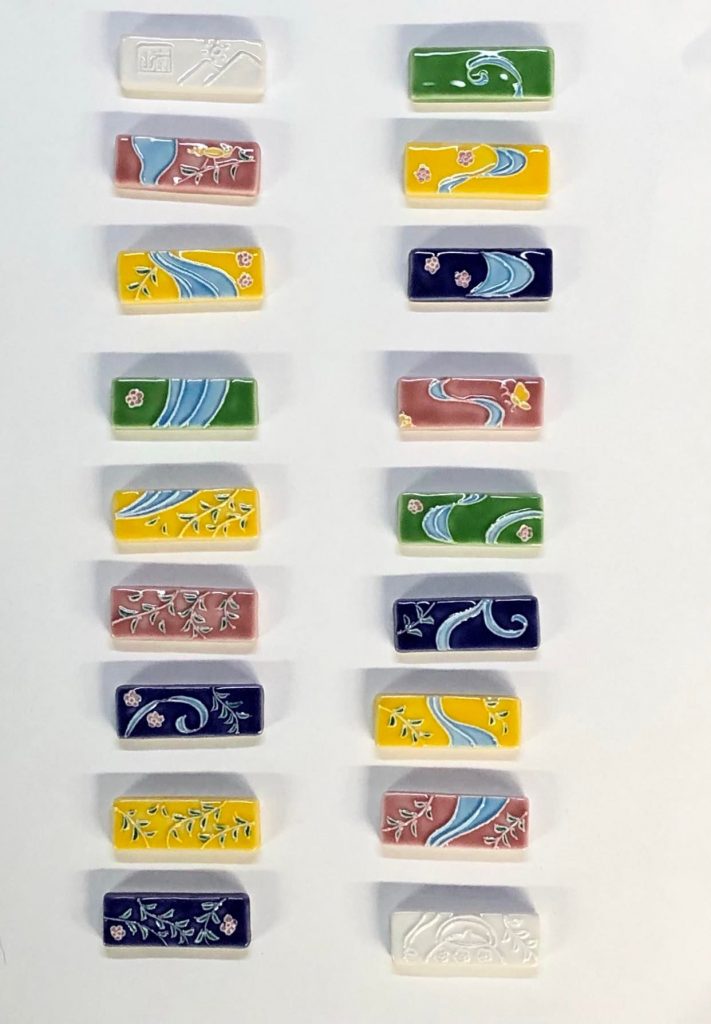
TEA SMOKE
茶の煙 柳と共に そよぐ也
cha no kemuri
yanagi to tomo ni
soyogu nari
-by Issa,
a 18th/19th century Japanese poet from the village of Kashiwabara in the mountains of Japan’s Shinano Province
the tea smoke and the willow together trembling
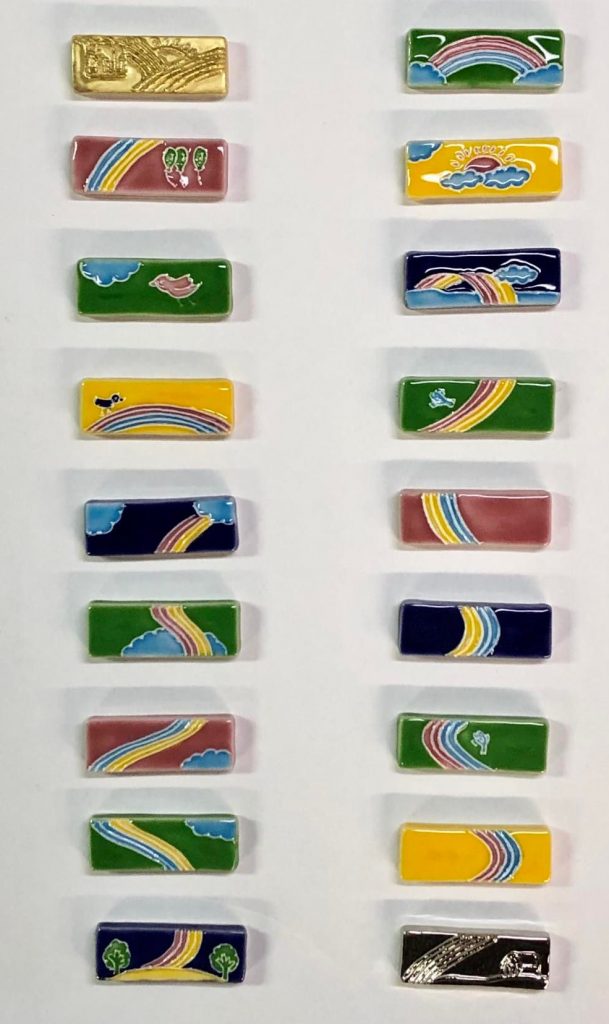
NIJI (RAINBOW)
The other design that still needs to be mounted on the
ofuro front panel is inspired by :
虹立ちて 忽ち君の 在る如し
Niji tachite
tachimachi kimi no
arugotoshi
by Kyoshi Takahama
As soon as the rainbow rises, it’s as if you were there
We dedicated this to a client who wanted the ofuro to be symbol of the family getting together.
It is nice to reunite, but it is even sweeter to be always together with the thought!
It only remains me to thank you for reading this letter to the end, renewing my best blessings for a serene Year End and sparkling new beginnings!
It is the last day of the year! Or as Matsuo Basho would say:
なりにけりなりにけりまで年の暮
nari ni keri / nari ni keri made / toshi no kure
it has become
it has become indeed
the end of the year
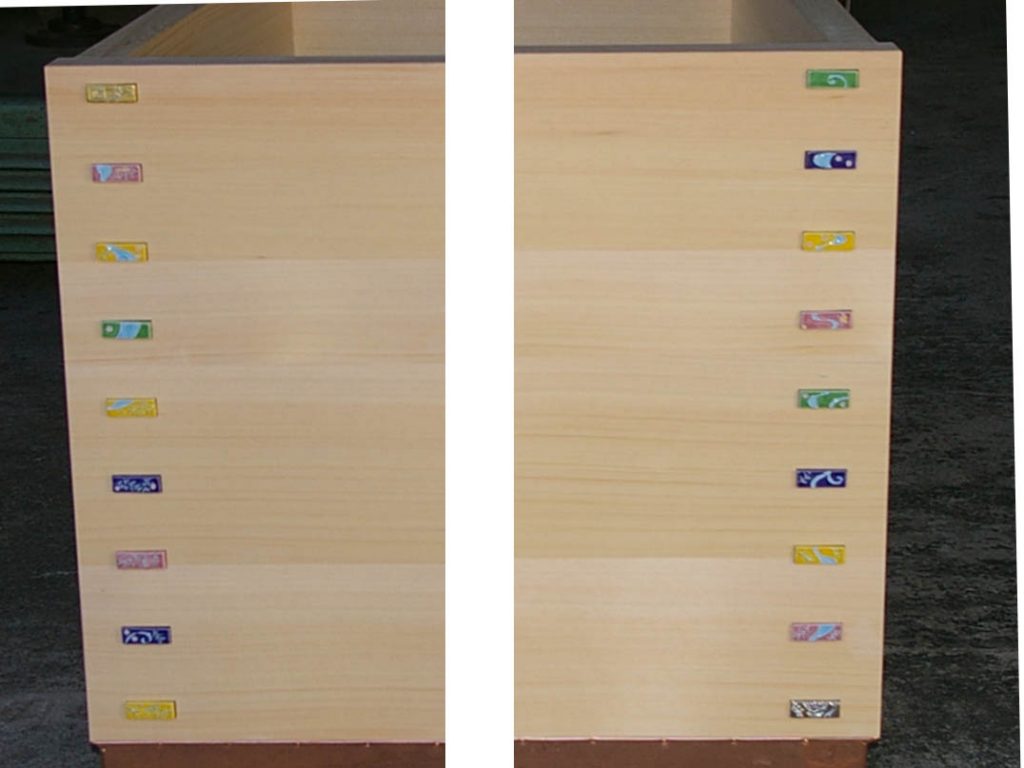
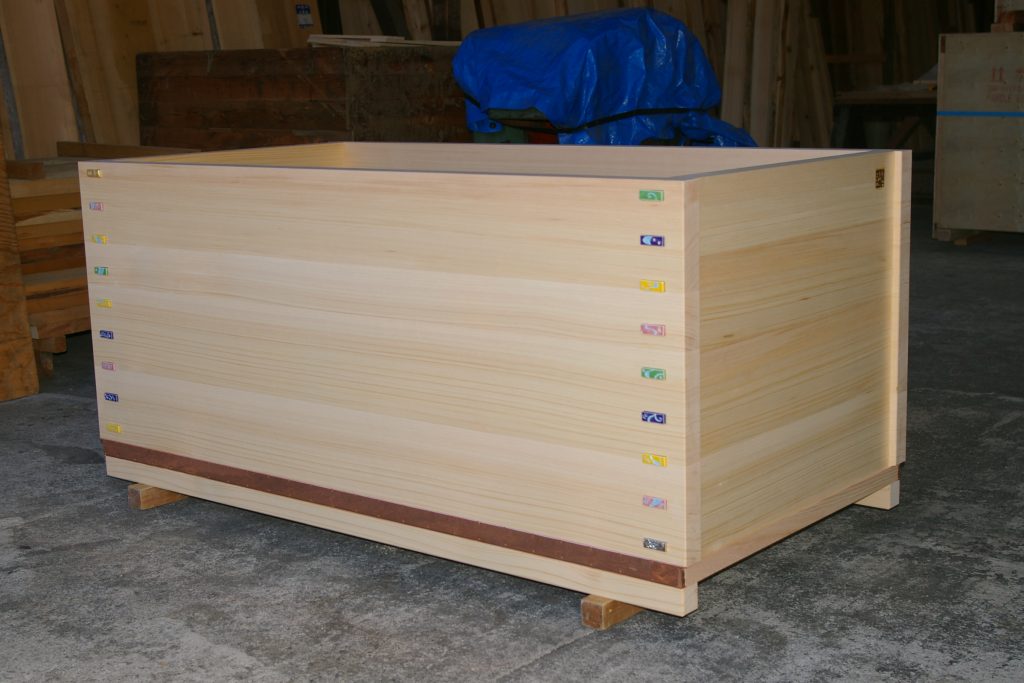
Yosiaki Kawara
2023年2月7日 at 7:22 PMYour idea is wonderful.
Kugi-Kakusi, Kazari metal ornaments that hide the nails that fasten the long posts of temples and mansions, are made in a variety of wonderful Japanese designs. In some cases, the kakusi are cloisonne, or cloisonne enameled, and are also gorgeous in color.
You have designed and installed a new Kugi-Kakusi bath tub. Not only does it prevent water from entering through the nail holes, but it also incorporates the beauty of Japanese ceramics in its design. The everyday bath tub has become art. It’s fantastic!
貴方の発想は素晴らしいです。
お寺や豪邸の長押を止める釘を隠す錺金物に、Kugi-Kakusi があり、日本風の種々の素晴らしいデザインがされています。場合によっては七宝で、色を付けられた豪華な物もあります。
貴方は、風呂桶新しいKugi-Kakusi をデザインして取り付けました。釘穴から水の浸入を防ぐだけでなくて、そのデザインに日本の陶芸の美しさを取り入れた。日常の風呂桶がアートになっています。素晴らしいです!
iacopo
2023年2月7日 at 8:59 PMThank you Kawara-sensei!
It is a great honor to receive such a positive comment from you!!
また色々教えてください!
どうぞよろしくお願いします。
ヤコポ